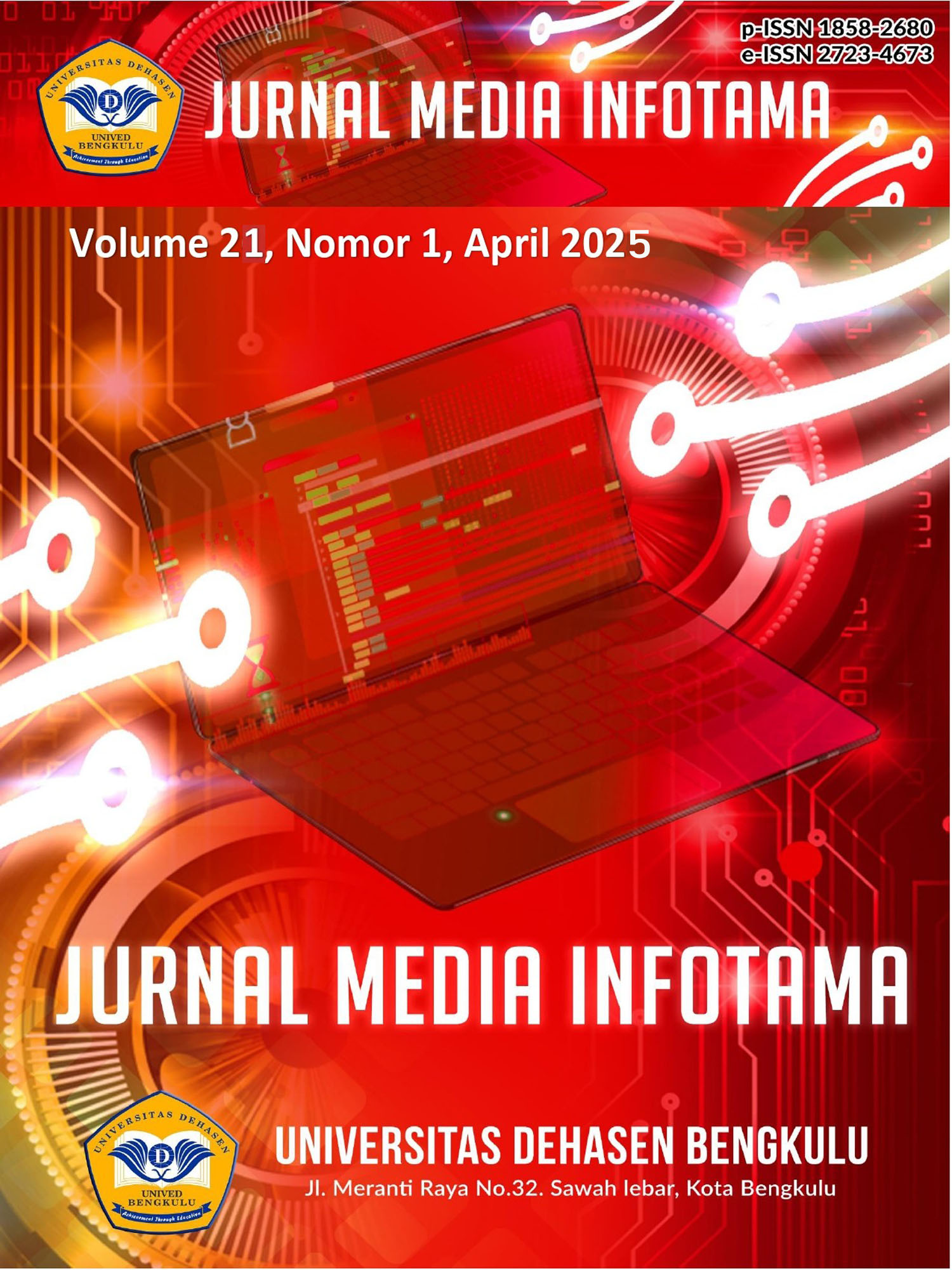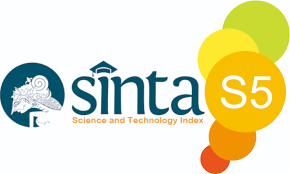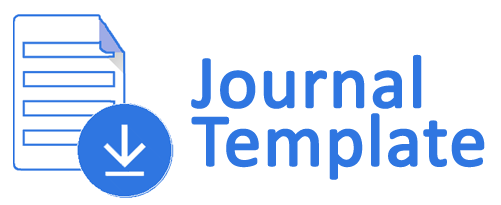Knowledge Management System Dalam Penanganan Stunting oleh Tenaga Kesehatan Kota Bengkulu
Abstract
Stunting is a big problem because Stunting is not only related to height but is comprehensive which includes the child's physical condition but is related to the child's ability to learn, mental retardation, and susceptibility to chronic diseases that will affect the quality of human resources in the future. create a Knowledge Management System (KMS) model for the handling community so that the knowledge possessed by community members can be used by other community members. Knowledge Management System (KMS) is a system in processing knowledge, the use of Content Management System (CMS) php Bulletin Board (phpBB) as a basis for supporting a discussion forum between farmers to exchange their knowledge of processed products, Conclusion The knowledge of mothers of toddlers is lacking about nutrition (40.4%) stunting occurs, Exclusive Breastfeeding (45.5%) stunting and Sanitation Hygiene (55.6%) stunting affects the rate of stunting in toddlers, Knowledge Management System for Community health workers can be used by the community to create, process, and distribute knowledge to all community members.
Downloads
References
[2] Salimar, D. Kartono, N. Fuada, and D. Budi Setyawati, “Stunting Anak Usia Sekolah Di Indonesia Menurut Karakteristik Keluarga,” Penelit. Gizi dan Makanan, vol. 36, no. 2, pp. 121–126, 2013.
[3] M. A. Sugianto, “Analisis Kebijakan Pencegahan Dan Penanggulangan Stunting Di Indonesia: Dengan Pendekatan What Is The Problem Represented To Be?,” J. EMBISS, vol. 1, no. 3, pp. 197–209, 2021, [Online]. Available: https://www.embiss.com/index.php/embiss/article/view/28
[4] D. Izwardy, “Kebijakan dan Strategi Penanggulangan Stunting di Indonesia: Studi Status Gizi Balita 2019,” Gerak. Masy. Hidup Sehat, p. 64, 2019.
[5] Y. K. Waroh, “Pemberian Makanan Tambahan Sebagai Upaya Penanganan Stunting Pada Balita Di Indonesia,” Embrio, vol. 11, no. 1, pp. 47–54, 2019, doi: 10.36456/embrio.vol11.no1.a1852.
[6] H. Rahman, M. Rahmah, and N. Saribulan, “Upaya Penanganan Stunting Di Indonesia,” J. Ilmu Pemerintah. Suara Khatulistiwa, vol. VIII, no. 01, pp. 44–59, 2023.
[7] Nuraina, C. Azizah, P. A. Fonna, M. Faza, mohd. hibban Machruza, and Y. Fariana, “di Indonesia. Presiden RI mengeluarkan Peraturan Presiden RI No. 72 Tahun 2021 tentang percepatan penurunan,” Rambideun J. Pengabdi. Kpd. Masy., vol. 5, no. 1, pp. 85–94, 2022.
[8] S. Hukum and J. Ilmu, “Syiar Hukum Jurnal Ilmu Hukum | Volume 18 Nomor 2 | Halaman 151 - 172,” vol. 18, no. 42, pp. 151–172, 2009.
[9] S. H. Waliulu, “Pengaruh Edukasi Terhadap Tingkat Pengetahuan Dan Upaya Pencegahan Stunting Anak Usia Balita,” J. Penelit. Kesehat. Suara Forikes, vol. 9, no. 4, pp. 269–272, 2018.
[10] Candarmaweni and A. Y. S. Rahayu, “Tantangan Pencegahan Stunting Pada Era Adaptasi Baru ‘New Normal’ Melalui Pemberdayaan Masyarakat Di Kabupaten Pandeglang (the Challenges of Preventing Stunting in Indonesia in the New Normal Era Through Community Engagement),” J. Kebijak. Kesehat. Indones. JKKI, vol. 9, no. 3, pp. 136–146, 2020, [Online]. Available: https://journal.ugm.ac.id/jkki/article/view/57781
[11] S. Khodijah Parinduri, “Optimalisasi Potensi Remaja Putri Dalam Pencegahan Stunting Di Desa Wangunjaya Kecamatan Leuwisadeng Kabupaten Bogor,” Promotor, vol. 4, no. 1, p. 23, 2021, doi: 10.32832/pro.v4i1.5518.
[12] H. S. Mediani, I. Nurhidayah, and M. Lukman, “Pemberdayaan Kader Kesehatan tentang Pencegahan Stunting pada Balita,” Media Karya Kesehat., vol. 3, no. 1, pp. 82–90, 2020, doi: 10.24198/mkk.v3i1.26415.
[13] T. Astika, E. Permatasari, Y. Chadirin, T. S. Yuliani, and S. Koswara, “Pemberdayaan Kader Posyandu Dalam Fortikasi Pangan Organik Berbasis Pangan Lokal Sebagai Upaya Pencegahan Stunting Pada Balita,” J. Pengabdi. Masy. Tek., vol. 4, no. 1, pp. 1–10, 2021, doi: 10.24853/jpmt.4.1.1-10.
[14] H. Purnamasari, Z. Shaluhiyah, and A. Kusumawati, “Pelatihan Kader Posyandu sebagai Upaya Pencegahan Stunting pada Balita di Wilayah Kerja Puskesmas Margadana dan Puskesmas Tegal Selatan Kota Tegal,” J. Kesehat. Masy., vol. 8, no. 3, pp. 432–439, 2020.
[15] A. E. Wijaya, “Knowledge Management System Model pada Forum diskusi Petani Buah Naga menggunakan CMS phpBB,” J. Teknol. Inf. dan Ilmu Komput., vol. 4, no. 1, p. 44, 2017, doi: 10.25126/jtiik.201741150.
[16] R. Ramadi, “Penerapan Knowledge Management System Pada Perusahaan Otomotif : Studi Kasus Pt. Astrido Jaya Mobilindo,” Simetris J. Tek. Mesin, Elektro dan Ilmu Komput., vol. 7, no. 2, p. 635, 2016, doi: 10.24176/simet.v7i2.776.
[17] F. Setiadi, A. Rubhasy, and Z. A. Hasibuan, “Model Government Knowledge Management System Untuk Mewujudkan Transparansi Dan Partisipasi Publik Pada Instansi Pemerintah,” Semin. Nas. Apl. Teknol. Inf. Univ. Indones. Kampus UI Depok Jawa Barat Telp. Faks, vol. 7863419, no. 021, pp. 17–18, 2011.
[18] M. K. Legiawan, “Penerapan Model Choo-Sense Making Pada Rancangan Knowledge Management System ( KMS ) Untuk Meningkatkan Mutu Kinerja Karyawan Di Universitas Suryakancana,” Media J. Inform., vol. 7, no. 2477–2542, pp. 1–8, 2015, [Online]. Available: https://jurnal.unsur.ac.id/mjinformatika/article/view/136/75
[19] R. Prasetya, “Prototipe Knowledge Management System Dalam Penerimaan , Penyimpanan , Dan Pendistribusian Zakat Berbasis Web 2.0,” Fakt. Exacta, vol. 8, no. 4, pp. 327–337, 2015.
[20] D. Budiastuti, “Model Knowledge Management Di Perguruan Tinggi,” Binus Bus. Rev., vol. 3, no. 1, p. 52, 2012, doi: 10.21512/bbr.v3i1.1279.
[21] S. Kurniawati, “Model Penerapan Knowledge Management Pada,” pp. 1–15.
Copyright (c) 2025 Sri Handayani; Yulia Darnita; Rozali Toyib

This work is licensed under a Creative Commons Attribution-ShareAlike 4.0 International License.
An author who publishes in Jurnal Media Infotama agrees to the following terms:The author holds the copyright and grants the journal the right of first publication of the work simultaneously licensed under the Creative Commons Attribution-Share Alike 4.0 License which allows others to share the work with acknowledgment of the work's authorship and initial publication in this journal.Submission of a manuscript implies that the submitted work has not been previously published (except as part of a thesis or report, or abstract); that it is not being considered for publication elsewhere; that its publication has been approved by all co-authors. If and when a manuscript is accepted for publication, the author retains the copyright and retains the publishing rights without limitation.
For new inventions, authors are advised to administer the patent before publication. The license type is CC-BY-SA 4.0.
MEDIA INFORMATION REVIEW: Journal of the Faculty of Computer Science is licensed under a Creative Commons Attribution-ShareAlike 4.0 International License.You are free to:Share
— copy and redistribute material in any medium or formatAdapt
— remix, modify and develop materialfor any purpose, even commercial.
The licensor cannot revoke this freedom as long as you follow the license terms












.png)


